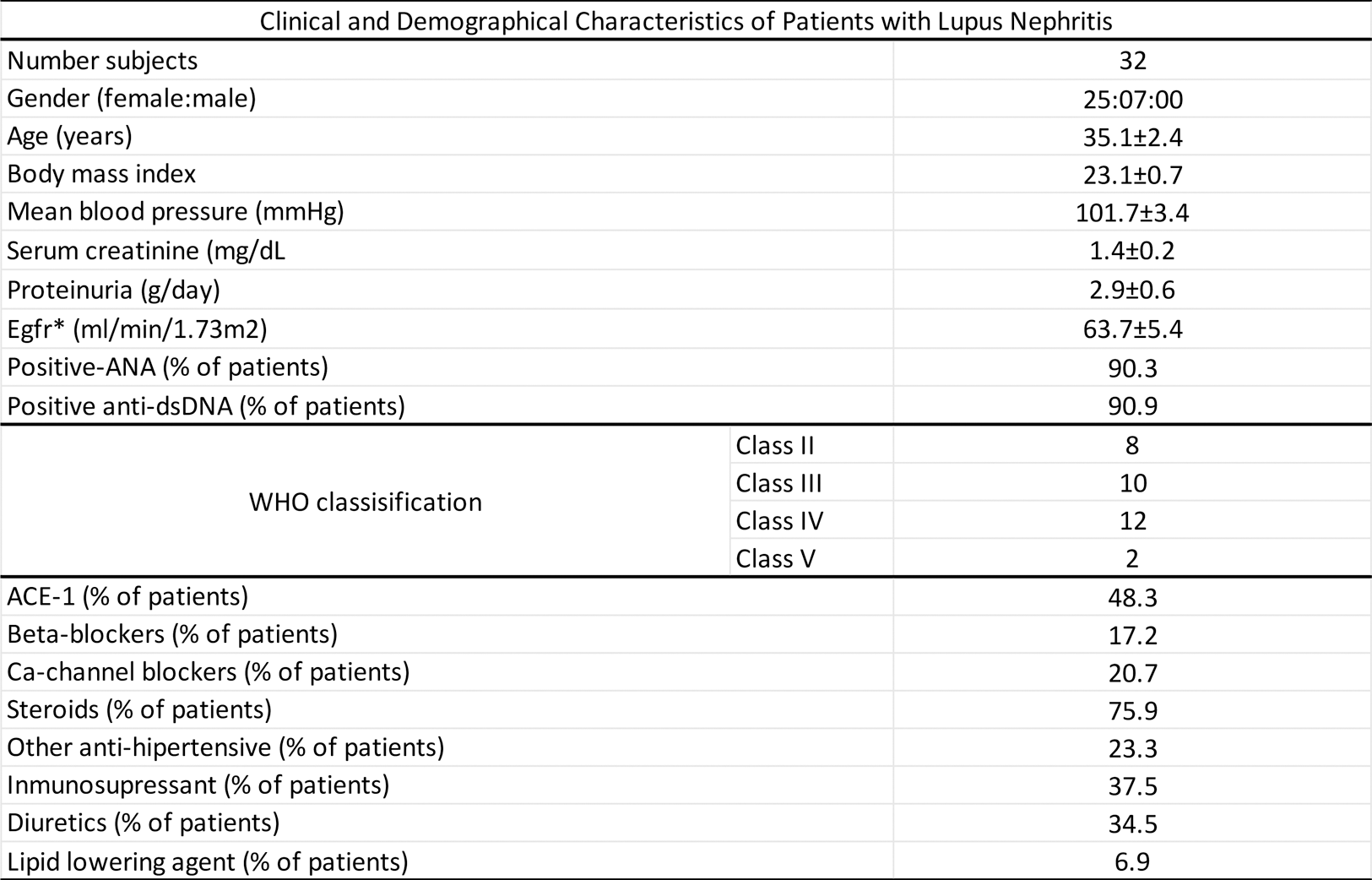

Background: Lupus Nephritis (LN) is an organ-target manifestation of Systemic Lupus Erythematosus, associated with significant mortality. Glomeruli (Gl) have been the most studied structures of LN, and studies showed anti-dsDNA immune complex deposition in its pathogenesis [1]. Tubulointerstitial (Ti) damage has also been described in LN to a lesser extent, [2] and T and B cell were shown to be present, [3] hypothesizing the role of adaptive immunity in the pathogenesis of Ti scarring in LN. This becomes important, as evidence suggests that Ti lesions are more predictive of progression to renal failure than Gl damage [4]. We assessed the relative immune cellular populations of Ti and Gl using CibersortX, a machine learning software that uses gene expression profiles to dissect 22 different immune cell types. The differences in relative cell populations in kidney structures will serve for the generation of new hypotheses regarding the pathogenesis of LN.
Objectives: We aimed to assess the relative immune cell populations in Ti and Gl tissue in kidney biopsies of patients with LN using CibersortX.
Methods: We downloaded the dataset GSE32591 from the GEO platform, which includes Gl and Ti samples from kidney tissue of patients with LN. To assess immune cell populations, we used CibersortX. Statistical analysis was done in SPSS 25 th edition. The normality of the relative cell populations was tested using Kolmogorov-Smirnoff test, and means were compared with parametric or nonparametric testing. All utilized software is free-access and available to the public.
Results: Clinical and demographical data of the patients is shown in Table 1. Relative populations of the immune cells analyzed are shown in Table 2. Significant differences were found between Gl and Ti in all cell populations except for activated NK cells, gamma delta T cells, resting NK cells, activated dendritic cells, and eosinophils.
Table 1. This table shows clinical and demographic data of patients with LN. This table was adapted from the study of Berthier [5]. Egfr: estimated glomerular filtration rate. *MDRD formula was used to calculate Egfr.

Table 2. This table shows the relative immune cell populations in diseased Ti and Gl. Statistically significant differences were identified using Student T test, except when indicated by an asterisk (*), where nonparametric test U Mann Whitney was utilized. LNTI: Diseased Tubulointerstitium with lupus nephritis, LNGL: Diseased Glomeruli with lupus nephritis, STD: Standard Deviation.

Conclusion: We aimed to assess the immune cell populations present in Ti and Gl tissues of kidney biopsies from patients with LN. We found significant differences on different immune cell types. These results represent an insight into the mechanisms underlying the pathogenesis of LN, and will serve to generate novel hypotheses. However, further in vivo studies are warranted to corroborate these results.
REFERENCES: [1] Kalaaji, M et al. “Glomerular apoptotic nucleosomes are central target structures for nephritogenic antibodies in human SLE nephritis.” Kidney international vol. 71,7 (2007): 664-72. doi:10.1038/sj.ki.5002133
[2] Yu, Feng et al. “Tubulointerstitial lesions of patients with lupus nephritis classified by the 2003 International Society of Nephrology and Renal Pathology Society system.” Kidney international vol. 77,9 (2010): 820-9. doi:10.1038/ki.2010.13
[3] Chang, Anthony et al. “In situ B cell-mediated immune responses and tubulointerstitial inflammation in human lupus nephritis.” Journal of immunology (Baltimore, Md.: 1950) vol. 186,3 (2011): 1849-60. doi:10.4049/jimmunol.1001983
[4] Hsieh, Christine et al. “Predicting outcomes of lupus nephritis with tubulointerstitial inflammation and scarring.” Arthritis care & research vol. 63,6 (2011): 865-74. doi:10.1002/acr.20441
[5] Berthier, Celine C et al. “Cross-species transcriptional network analysis defines shared inflammatory responses in murine and human lupus nephritis.” Journal of immunology (Baltimore, Md.: 1950) vol. 189,2 (2012): 988-1001. doi:10.4049/jimmunol.1103031
Acknowledgements: NIL.
Disclosure of Interests: None declared.